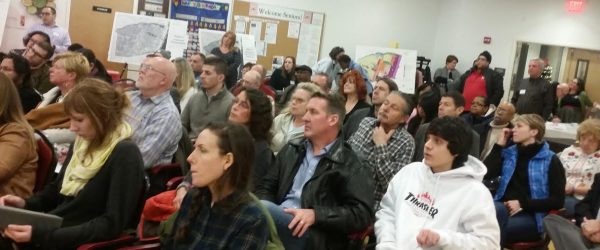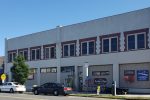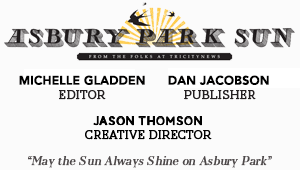Master Plan Reexamination Survey asks for Public Input
Diversity and Art Conversation Sparked by Community Input
Tell us what you think about Asbury Park.
That is the introduction to an ongoing community wide survey being conducted as part of the municipality’s Master Plan reexamination.
But artist Conrad Neblett [at right] of Sunset Avenue, in addressing the governing body at Wednesday night’s City Council meeting, voiced concerns that not all members of the community were fairly represented during the two public meetings held in as many months.
“When I came in, I immediately wanted to turn around,” he said of the first meeting held Feb. 21 at the Springwood Avenue Senior Center. “I was so disappointed and so hurt that none of the facilitators were people of color, none of the people in the stations were people of color…For me, it’s an amazing thing to include the community in the planning of this community; and I didn’t see me. I didn’t see me addressed. I didn’t see anyone that looks like me, and that bothers me.”
Neblett said he moved to the city because of its reputation for being diverse and that his concerns rest in the fact that there “needs to be a bridge to handle the divide…This is 2017 and that this is going on, in particularly in the climate of what is going on in our country. I can’t believe this is happening in Asbury Park.”
concerns rest in the fact that there “needs to be a bridge to handle the divide…This is 2017 and that this is going on, in particularly in the climate of what is going on in our country. I can’t believe this is happening in Asbury Park.”
He said he shared his concerns with Councilwoman Yvonne Clayton [at right] at the second meeting held March 15 at Trinity Episcopal Church on Asbury Avenue. And while Neblett said he believes Clayton, who led both meetings, will follow through, he was approaching the governing body as a whole to ask “What is going on.”
“This is not acceptable,” he said. “Were you all aware, that’s the question that I am left with.”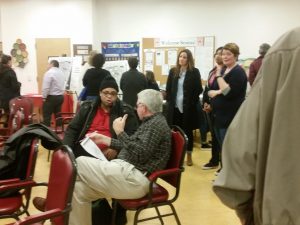
Mayor Moor said in response that they asked for volunteers.
“You get what you get,” he said. “We will look into this and get back to you.”
But Neblett said a part of the problem has to do with who they asked. He asked the mayor to clarify whether or not he noticed the lack of diversity.
And while the mayor said in the immediate, “I try to notice everything,” in a follow up interview he said he was not trying to avoid Neblett’s questions or concerns, but rather he did not want to shoot from the hip and say the wrong thing or give misleading  information.
information.
“I didn’t know the answer,” Moor said the following day. “I wanted him to let me look into it because I didn’t want to give an off-the-cuff answer.”
Moor said of course he is aware of the historical systematic divide that exists between the east and west sides of the community but that he believes the administration is making strides to bring the town together.
“We are making progress with things like the new park [and the diverse groups of people that attend the weekly free summer concerts in the park] and with housing,” he said. “Truthfully I noticed it but I didn’t know why, so I couldn’t answer.”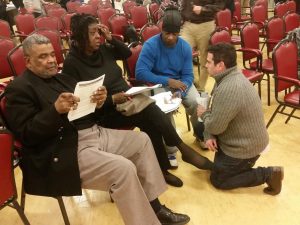
In following up with the administrative process, Moor said he learned that Communication’s Director Hannah Walker and City Planner Michele Alonso drove around for days, leaving fliers and postcards in businesses, churches, and at community organizations throughout the west side.
He said the municipality ran both English and Spanish language advertisements, and mentioned the two public meeting sessions at every municipal meeting prior to the events.
“I didn’t respond last night because I did not know all the facts,” Moor said. “I don’t think that anything was done intentionally. I think we are trying. We are going to make a hiccup once in awhile, absolutely, but it was nothing intentional.”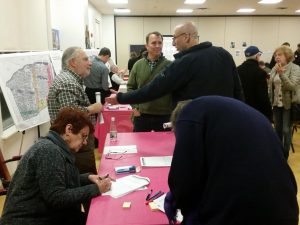
City officials said a Master Plan Review Subcommittee was organized by the Planning Board, which is charged with crafting the Master Plan Reexamination Report. That committee consists of three Planning Board members, Alonso, and Michael Sodano [at right in plaid], resident, ShowRoom Cinema owner, former long time member of the Transportation Committee, and current member of arts and of business committees.
The subcommittee was charged with creating a list of stakeholders and organizing the two public meetings and soliciting volunteers to man stations that addressed historic preservation, sustainability, open space, parks, and recreation, economic development, circulation (including pedestrian and bicycle), community facilities, and urban design.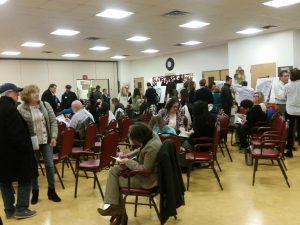
From a series of meetings held in the course of two days, the stakeholders identified the need to reduce negative impact of entertainment activities, improve bike and pedestrian infrastructure, improve parking availability, upgrade Asbury Avenue to better serve as a city gateway, improve housing and code enforcement, reduce negative impact of temporary rental units, expand job opportunities and economic development, and maintain housing options and affordability. The stakeholder group also voiced concerns about the shift in the city’s character, particularly along the waterfront; and the need to clarify and expedite the development approval process.
“While I respect Conrad’s views and concerns, the City solicited volunteers for the two public meetings and accepted those who were available,” City Manager Michael Capabianco said in a written statement. “Please keep in mind that one of the events was canceled due to the fake blizzard. The committee was formed based upon experience in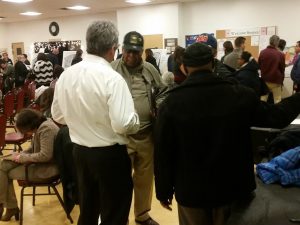 each respective field. For example, the City’s Transportation Planner sat at the station for transportation. Both events were led by Councilwoman Clayton, who is also a Planning Board member. We as representatives of the City’s government are always looking for volunteers to assist us in continuing the City’s revitalization.”
each respective field. For example, the City’s Transportation Planner sat at the station for transportation. Both events were led by Councilwoman Clayton, who is also a Planning Board member. We as representatives of the City’s government are always looking for volunteers to assist us in continuing the City’s revitalization.”
Moor said while he agreed that it would have prudent to bring in members of the Asbury Park Neptune Minister’s Alliance [at right] to the table early on in the process, he said in the city’s form of government he is not allowed to overstep the limitations of his seat by involving himself in a process that he was not a part of organizing.
During the Feb. 21 meeting, members of the ministerial alliance asked why they were not included in the process or invited to be stakeholder participants.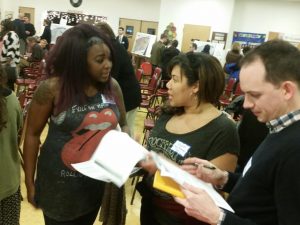
“We had developers, community and business organizations, economic development initiators, and city officials,” Planning Board Consultant Elizabeth K. McManus of Clarke Caton Hintz said at the meeting. “I don’t think we had any [specific church organization] represented. We relied on the city to identify those organizations. Asbury Park is not a particularly big city but it is a very engaged city. It’s a little hard to make sure you get everybody, so it’s nice to have meetings like this to get folks who weren’t at the stakeholder meetings who can come and raise their hand and say we represent a lot of people.”
Among those under that classification is the city’s growing arts community, who presented a petition to ensure their voice is heard during the planning process.
“We don’t have a specific arts master plan portion of the reexamination report but I would suspect the way to promote arts can be weaved into a lot of what we are going to 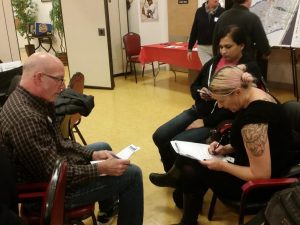 write about. For example, where are artist housing, artist gallery, and artist installations going to go. I see that as very relevant to the land use plan and there are ways to integrate art into sustainability efforts and into for transportation systems like funky artistic bike racks, we have a circulation element.
write about. For example, where are artist housing, artist gallery, and artist installations going to go. I see that as very relevant to the land use plan and there are ways to integrate art into sustainability efforts and into for transportation systems like funky artistic bike racks, we have a circulation element.
“What we will end up doing is find ways to integrate some of these topics that we weren’t specifically asked to focus on, to make sure that we hit them. So, I don’t want people to get discouraged. Just because we don’t have an arts master plan doesn’t mean that we can’t talk about it. It’s critical to Asbury Park’s history and future.”
Members of the community can still add their voice to the conversion by participating in an online survey, by clicking here.
——————————————————–
Follow the Asbury Park Sun on Facebook, Twitter and Instagram.
The Asbury Park Sun is affiliated with the triCityNews newspaper.

